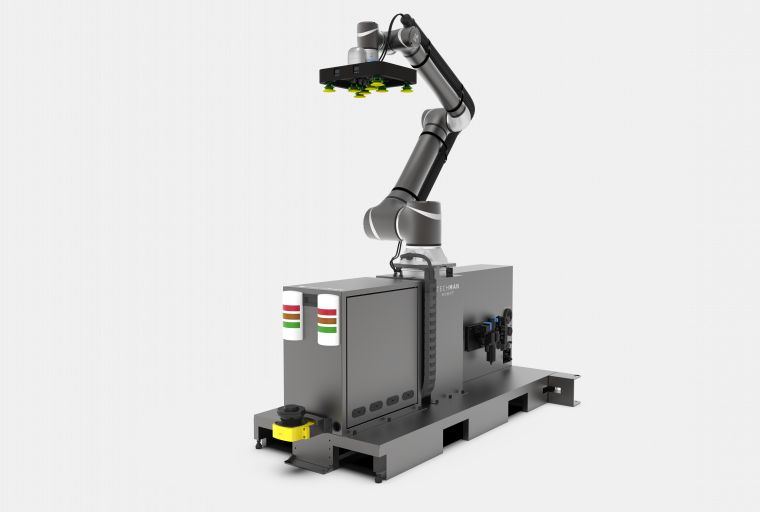Why and How Industrial Automation Is the Future
Put simply, industrial automation is the future. With increased labor needs due to product demand and open positions, automation is the answer for many industries. From manufacturing to breweries, automation is proving to be the ideal coworker for many employees.
Rather than taking jobs, automation is filling the need for dirty, dull, and dangerous jobs while providing employees with jobs they are better suited for. How could automation technology provide support for your business? Let’s dive into that below.
The Ideal Coworker
As mentioned above, automation performs tasks that are generally considered dull, dirty, and dangerous. Dull jobs tend to place ergonomic strain on employees. Think applications like pick and place or any other task that involves workers performing repetitive movements again and again. Dirty jobs may involve substances like oils, adhesives, chemicals, and other substances used to create products. Dangerous jobs may involve toxic substances or machinery capable of causing injury. Each of these jobs can prove difficult to fill with capable workers due to the position’s working conditions.
Utilizing automation technologies such as robotics can prove to be a better option for many companies. The automation technology assumes the risk of the undesirable tasks while allowing human coworkers to instead choose other positions that are more fulfilling and safe, such as robotic programming.
Applications Automation Technology Can Assist With
There are many applications that automation technology can assist with. Actually, the options are virtually endless. A combination of robotic technology, pneumatic technology, and electrical automation can create efficient systems within your production facility. Common automated applications include the following:
- Pick and Place
- Injection Molding
- CNC
- Packaging and Palletizing
- Quality Inspection
- Bottle Filling
- Assembly
- Polishing
- Machine Tending
- Screw Driving
- Lab Analysis and Testing
- Gluing, Dispensing & Welding
- Safety Systems
- Your Industrial Application
Automation is customizable, so finding the perfect solution for your business needs has never been easier. The goal of any automation system is to find more efficiency and aid in business growth. Most manual tasks can be automated, and if necessary, automation technology can function continually without the need for a break.
Automation Trends & Types
The automation industry has seen increased demand in the past several years, especially in the case of collaborative robots. According to Forbes, “Cobots have advanced sensors and software that make it easy to work safely right next to human workers without the need for safety barriers. According to Reportlinker, cobots are the robotics segment that will grow the most by 2025, in part due to easy-to-use programmable software” (Rodrigues, Carl. “Robots Are Already Taking Over The World”. Forbes).
Automation technology, including robotic tech, is making waves and will only continue to help businesses build efficient production systems. Below are just a few types of automation you may find useful for your industrial applications and needs.

Electrical Automation
Electric automation utilizes electrical energy to power equipment. Electric automation technologies like electrical actuators, sensors, lasers, and control panels are used in various combinations to handle repetitive tasks and increase worker safety. Electrical automation can be used for applications in packaging, cutting, product checks, and more.
Robotic Automation
Industrial robots and collaborative robots are common machines in the robotic automation world. Commonly referred to as robotic arms, these automation technologies often power manufacturing tasks such as screw driving and welding.
Collaborative robots are specifically known to utilize safety protocols to ensure the safety of human coworkers. While industrial robots are effective, they do require guarding and other safety parameters to safeguard humans from injury. For this reason, cobots are used when working closely with humans. That being said, collaborative robots are not ideal for every circumstance, especially when a high payload is required.
Pneumatic Automation
Pneumatic automation utilizes pressurized air or gas to power applications and generate motion. This type of automation is commonly used for powering pick-and-place, packaging, and positioning applications. Pneumatic automation is generally considered cost-effective and safe. Commonly used alongside other technologies, pneumatic automation utilizes tools like grippers and actuators to carry out tasks.

gripper system is a general purpose gripper for use as a transfer finger or end of arm tool.
Contact Us for Your Automation Needs
As automation technology continues to evolve and be implemented in more organizations, trends continue to point towards improved efficiency and saved costs for many industries. Whether improving safety for workers or performing tasks that human coworkers would rather not take on, most companies can see ROI quickly. If you find your business is struggling to scale or that it is hard to acquire the right talent for production needs, automation may be the right fit for you. Ultimately, automation is the key to working smarter rather than harder.
Robotic technologies are becoming standard in the modern world. If you require help finding the right automation system for your particular use case and needs, contact an automation specialist at JHFOSTER.
